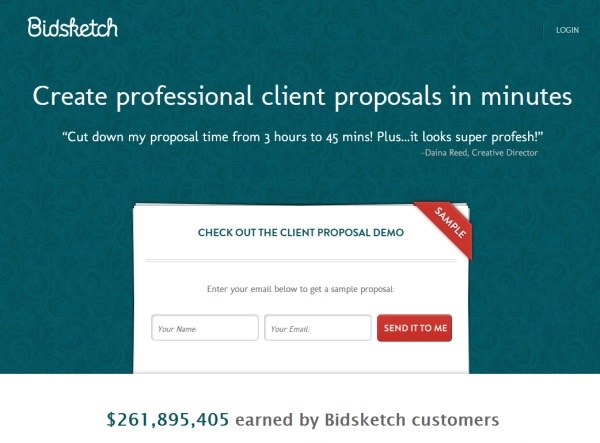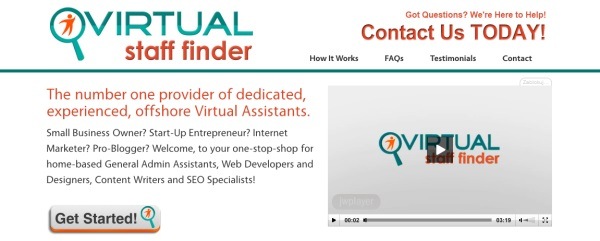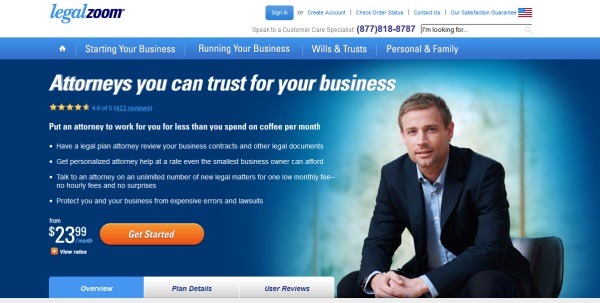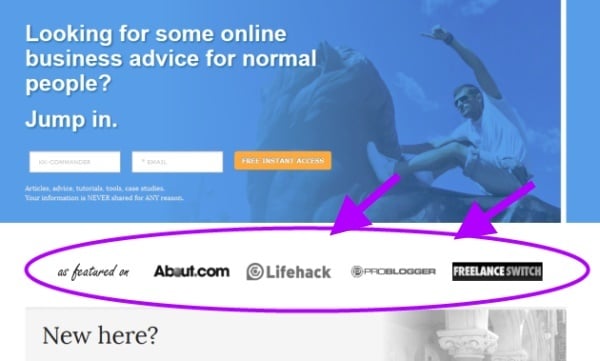Let’s face it, if you’re a sole-proprietor business owner, or a freelancer operating on your own then, inevitably, some clients will not take you seriously just because.
In the 21st century, it seems that every other person has some kind of a business going. This makes the fact of being an entrepreneur not enough to make you look like a true pro anymore—even though you surely are one.
So, let’s even the playing field a bit and introduce some (sometimes tricky) methods and tools that you can use to make yourself look like a big deal.
Being the ‘front man’ vs. being the only man
To start with, I just want to say that the path I’m going to show you here isn’t about hiding yourself behind a business curtain of sorts. Being the front person of your small business is still cool. More than that, it’s actually a great way to give your business some personality.
On the other hand, if it’s clearly visible that you are not only the front person, but also the only person in your business, then it will always be a disadvantage that can put some clients off.
Let me give you an example of how to utilize a personal brand properly.
Neil Patel is the front man of QuickSprout. His personality drives the brand, the site, and everything that QuickSprout is. However, none of Neil’s clients or even followers get the impression that he’s alone in business (he’s not). He uses his personal brand effectively, without it impacting the overall appearance of his businesses.
There are a lot of details that play a part in his case, and not necessarily the ones I’ll be presenting on my list. However, I’m mentioning him just to show you what we’re aiming for as our final goal.
Onwards!
1. Have the right business structure
This one’s quite obvious, but at the same time, it’s one of the best ways to make yourself not look like a one-man band.
In short, depending on the country you’re operating from, there surely are different business entities you can use. And while every country has its unique regulations, they tend to be kind of similar on a wider scale.
For instance, every jurisdiction has a version of the sole proprietorship, which stands for operating on your own as an independent contractor. While it is a good structure to get you started, it does make it obvious that you’re alone in the business. So, if you want to look like a big deal, you have to upgrade as soon as you can afford it.
The logical next step up is your country’s version of an LLC.
Then, once you have the right business structure…
2. Don’t call yourself the CEO
Nothing, I repeat, nothing screams sole-proprietor business like introducing yourself as the CEO of [Insert Unknown Company Name Here].
The term CEO sounds good only if it’s followed by a fairly recognizable company name. Everything else works against you. There are two ways out of this, and while I’m not a fan of the first one, I’m listing it anyway just because it’s a fairly popular practice:
- Give yourself a mid-management title. For instance, instead of introducing yourself as the CEO, you can be a Director of ____, or a Manager of ____. I’m personally not a fan of this because it’s kind of a lie. After all, you’re suggesting that there’s someone above you in the business structure.
- Don’t use a title at all. As simple as this. Introducing yourself as John Smith of [Company Name] is really good enough.
3. Use Grasshopper
Traditionally, sole-proprietor businesses don’t use 1-800 numbers, or large phone systems with extensions and various advanced features. Back in the day, this was reserved only for the big guys.
Not anymore. Grasshopper is a virtual phone system that brings you all that.
The main benefit for you is that you can list a 1-800 number on your site that will greet the caller and then send them over to a specific department based on their tone selection.
For instance, you can set the x1 extension to be “sales,” x2 to be “support,” and so on.
4. Use Bidsketch
Bidsketch is a client proposal tool. In lay terms, this means that you can use it to design, build, manage, and send good-looking client proposals.
Bidsketch has many cool features. Just to give you an example, the tool lets you know who viewed your proposals, when, and how much time they spent interacting with them. This is a great (and disguised) feedback mechanism informing you on the quality of your offer.
Of course, you can still handle proposals the traditional way—by jotting stuff down in Word and then sending it manually via email. But then again…that’s how a sole-proprietor business would do it.
5. Hire a virtual assistant (VA)
Now, before you say that you don’t have a budget for that, just give me a chance to explain myself.
Hiring a VA can still be affordable, but you have to think outside the box—or outside the U.S., to be more precise. For instance, a service called Virtual Staff Finder will help you hire qualified personnel from the Philippines.
How does this make you look like a big deal? Simple: if someone gets an email signed by “John Smith, virtual assistant of Your Name” it will always look good, very good. Apart from making you look good, they will also help you outsource some of the daily tasks you do.
6. Start using progress reports
Clients simply want to know what’s going on with their projects. And while companies have a number of processes set in place to make sure that the client is happy (or at least seems like they’re happy), sole-proprietor businesses usually don’t.
In the freelancing niche, for example, it’s common for clients to hear from their contractor only two times:
- the “negotiating the deal and describing the task at hand” email, and
- the “hey, I did the work” email.
While mid-project communication is not always required, especially if a project is straightforward, it can really do a lot in terms of making you look professional.
Progress reports are a simple way of handling just that. And the reports themselves don’t have to be anything fancy. You can go with a basic yet good-looking Google document with your logo at the top and a nicely designed list of the things that have already been done and the things that are still left to do. Focus on making it clear and readable.
7. Use legal-proof contracts
Contracts are one of the most boring things about being a business owner. But hey, we all need them to operate safely.
The problem with contracts, though, is that if you’re not an attorney, you don’t have a way to know what a good contract is. And even if you have a good template, you don’t have a possibility to evaluate any changes that your client might have introduced prior to signing their name.
The 21st century comes to the rescue because as it turns out, there is an affordable solution. Among its many services, Legal Zoom offers Legal Plan Attorneys’ help. Basically, for a monthly fee, you get an attorney to review your business contracts and other legal documents and also help you get them right.
8. Use social proof and trust elements on your site
This is what trust elements look like on a website:
Nothing fancy from a technical point of view, right? It’s just a set of company logos and website logos. This is a mind trick, so to speak. What it achieves is it showcases some big names that the business in question has worked with. This proves, to some extent, the business’s credibility in the eyes of every prospective client.
A very simple yet very effective trick. Of course, making it a lie is out of question. You do need some nice entries in your portfolio to pull it off.
9. Focus on design
I’m sorry that I have to say this, but people really do judge the book by its cover. It’s just how things work with humans.
That’s why nine out of 10 times, you will have a better chance at landing a deal if your solution/website/e-commerce store looks better than the competition’s.
Don’t worry, though, because the best thing about the internet era we live in today is that good design doesn’t cost much.
- For logo, flyers, business cards, book covers, and all other stuff like this: use 99designs.
- For your website: use WordPress and a premium theme (Lifehack is running on WordPress, by the way, so the platform really is powerful).
- For your e-commerce store: use Shopify.
10. Use a real-time customer satisfaction solution
Sounds fancy, right? What I mean is the following. If you’re running an e-commerce store, you will have a number of prospective customers having a multitude of questions about your products. However, if there’s no answer on your site, and no one to provide an answer in an accessible way, you will lose the sale.
To help you with this, you can use a tool like Zopim. In short, it’s a live chat solution, but that’s an understatement. What it does, is it lets you reach out to your customers at the exact moment when they’re having questions. And if you’re not on your computer, you can set an automatic outreach message and then receive customer follow-up questions via a text message.
Over to you
In my opinion, using just two or three tools from the above list will already give you an advantage. Using all 10 will make it really unlikely for your clients or customers to ever think that there might be just one person running the business they’re dealing with.
But what do you think, have you tested any of these yet?


















































